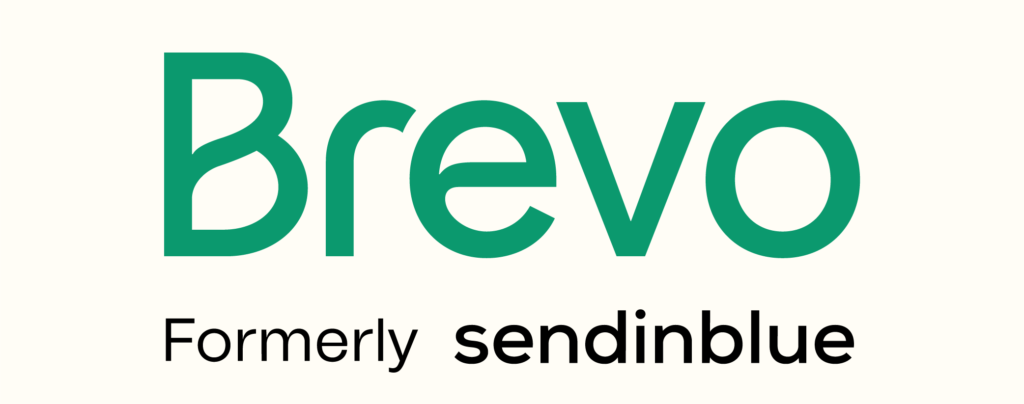
In the digital age, blogging has emerged as a powerful medium for self-expression, sharing knowledge, building a community, and even earning a living.
Starting a blog can be an exciting journey, but it can also feel overwhelming, especially if you are new to the world of blogging.
Fear not! This comprehensive guide will walk you through the step-by-step process of starting your blog, enabling you to unleash your creativity and passion in the online world.
1. Understanding Blogging: A Prelude
Before diving into the technical aspects, let’s begin by understanding what blogging truly means.
At its core, a blog is an online journal where you share your thoughts, ideas, experiences, and expertise with a wider audience.
It could be about anything – from personal anecdotes to professional insights.
2. Identifying Your Niche: Passion Meets Purpose
Finding Your Passion
The first step in starting a blog is to identify your passion – what truly excites and motivates you.
Steps to sort out your passion:
- Start with white paper and a pen.
- Note down all your passions on paper.
- Now arrange all your passions in an order.
- Lastly, choose the first in the order and get going.
Here are the 12 other steps to finding your passion can be a fulfilling journey, and here are the steps to help you along the way:
- Self-Reflection
- Identify Your Strengths
- Explore Different Areas
- Take Note of Peak Moments
- Consider Childhood Dreams
- Overcome Fear and Doubt
- Seek Inspiration
- Experiment and Learn
- Prioritize Your Happiness
- Be Patient
- Set Goals
- Make Time for Your Passion
Blogging about something you love ensures that you stay committed and consistently produce engaging content.
Selecting Your Niche
Once you’ve discovered your passion, narrow it down into a specific niche.
A focused niche allows you to target a specific audience, making your blog more appealing to them.
Examples of popular niches include travel, food, personal finance, fitness, and technology.
Choose one niche wisely
A niche is something that you need to work on it for a long time in order to generate proper and stable income.
Thus, Before you choose a topic just do research so partially, rather prefer to take the help of a known researcher and use tools like Ahref, SEMRush, and Uber suggest for doing detailed research into the number.
Do check out this blog from SEMRush talking about how to choose a niche in this era.
3. Choosing the Right Blogging Platform
Sharing our thoughts and ideas with the world has become easier with the below-mentioned tools, with the help of them we can easily make sure our ideal reach the right audience.
The Best Blogging Platforms of 2023
- WordPress: Best for customization
- Wix: Best for drag and drop
- Weebly: Best for e-commerce blogging
- Drupal: Best for developers
- Squarespace: Best all-in-one platform
- CMS Hub: Best for marketers
- Medium: Best for Its built-in audience
WordPress: Power and Flexibility
WordPress is the most popular and versatile blogging platform.
It offers numerous themes, plugins, and customization options, making it suitable for beginners and experienced bloggers alike.
You can download it from this website: WordPress.org
Wix: User-Friendly Drag-and-Drop
Wix is renowned for its beginner-friendly drag-and-drop website builder.
If you have no coding knowledge but still want to create a professional-looking blog, Wix provides an intuitive interface to help you achieve just that.
Weebly
Weebly is now a part of the Square product suite. This means never missing a sale and letting your customers pay how they want to.
Whether it’s at a pop-up shop or your own online store, Square takes care of your payments for you, so you can focus on your business.
Blogger: Simplicity with Google Integration
Blogger, powered by Google, is a user-friendly platform for beginners. It integrates seamlessly with other Google services, making it convenient if you’re already using them.
4. Picking the Perfect Domain Name
A Memorable Identity
Your domain name is your blog’s identity, so choose wisely. Opt for a name that is easy to remember, reflects your niche, and aligns with your brand identity.
Keywords in Domain
Incorporate relevant keywords in your domain name to enhance its visibility on search engines. For example, if you blog about vegan recipes, consider a domain like “PlantBasedDelights.com.”
Personal Branding in Domain
There are lots of people who build websites with a domain using their name as their branding.
Such as:
- Marie Forleo – She helps people like you to dream big and back it up with meaningful action.
- adam enfroy – Here he shares his knowledge of software products and also helps people who are willing to learn “How to grow a blogging business”.
Personal branding is the one key to growing a business around a person. So this process needs to be followed carefully as it all depends on the knowledge, and experience of that person in those industries.
5. Web Hosting: Finding Your Blog’s Home
Importance of Reliable Hosting
Selecting a reliable web hosting service is crucial for your blog’s performance. It ensures that your site remains accessible, loads quickly, and handles traffic efficiently.
Shared vs. Dedicated Hosting
When it comes to web hosting, two common options that individuals and businesses consider are shared hosting and dedicated hosting.
Both options have their merits, but they cater to different needs and requirements.
Understanding the difference between shared and dedicated hosting is crucial in making an informed decision for your website.
Shared Hosting:
Shared hosting is like renting a room in a shared apartment.
In this setup, multiple websites share the same server and its resources.
It is an affordable option for new bloggers, small businesses, or those with limited technical knowledge.
Shared hosting providers manage server maintenance and technical tasks, making it convenient for users who don’t want to deal with server management.
However, since multiple websites share the same resources, there can be performance limitations.
If one website experiences high traffic or faces technical issues, it may affect the performance of other sites on the server.
Additionally, customization options are limited, and security can be a concern, as a security breach on one site can potentially impact others.
Dedicated Hosting:
Dedicated hosting is like owning a private house. With this option, you have an entire server dedicated solely to your website.
This provides full control over server resources, including CPU, RAM, and storage.
Dedicated hosting is ideal for large businesses, e-commerce websites, and high-traffic platforms that require maximum performance, security, and customization.
The major advantage of dedicated hosting is its unparalleled performance and reliability.
Since you have exclusive access to the server’s resources, there is no risk of performance bottlenecks caused by other websites. Additionally, you can implement strict security measures to protect sensitive data.
However, dedicated hosting comes at a higher cost compared to shared hosting. It also requires technical expertise for server management, making it less suitable for beginners or those who prefer a hands-off approach.
Whether it is a shared or dedicated server it is all just a choice between shared and dedicated hosting depending on your website’s specific needs, budget, and technical proficiency.
Shared hosting is budget-friendly and easy to manage, but it may have performance and security limitations. On the other hand, dedicated hosting offers maximum control, performance, and security, but at a higher cost and requires more technical know-how.
Assess your requirements carefully and select the hosting option that best aligns with your website’s goals and growth plans.
6. Setting Up Your Blog
Installing WordPress
If you’ve chosen WordPress as your platform, most hosting providers offer one-click installations, making it a breeze to set up your blog.
Choosing a Theme
Select a visually appealing theme that complements your niche and enhances user experience. Ensure that the theme is mobile-responsive for seamless viewing on different devices.
Do some research on basic settings
Let us take an example for now that you are using “WordPress”.
There are some basics settings Like,
Permalinks:
Go to Settings > Permalinks and choose a URL structure that is SEO-friendly and descriptive. The “Post name” option is a popular choice as it includes the title of your blog posts in the URL.
Site Title and Tagline:
Navigate to Settings > General and set your Site Title and Tagline.
These appear in search results and help visitors understand the purpose of your website.
Time Zone:
Set your website’s time zone to match your location. Go to Settings > General and select the appropriate time zone under “Timezone.”
Discussion Settings:
Configure your comments settings under Settings > Discussion. Choose whether you want to enable or disable comments on your posts, and set options for comment moderation and notification.
Media Settings:
Adjust the media settings to specify the default sizes for images uploaded to your site. Go to Settings > Media and set the image sizes that fit your theme’s design and layout.
Reading Settings:
Determine how your homepage displays content under Settings > Reading. Choose between displaying your latest blog posts or a static page as the front page.
Privacy Settings:
Address your website’s privacy policy by going to Settings > Privacy. Set up a privacy policy page or link to an existing one to comply with data protection regulations.
User Profile:
Update your user profile information by clicking on Users > Your Profile. Here, you can set your display name, contact information, and password.
Install Essential Plugins:
Install and activate necessary plugins to enhance your website’s functionality, security, and SEO. Popular plugins include Yoast SEO, Akismet (for spam protection), and caching plugins like WP Super Cache or W3 Total Cache.
Theme Customization:
Customize your website’s appearance by accessing Appearance > Customize. Depending on your theme, you can modify colors, fonts, header, footer, and other design elements.
Create Important Pages:
Create essential pages like About, Contact, and Privacy Policy. These pages provide valuable information to visitors and are often expected on websites.
Backup:
Set up regular backups of your website to ensure you have a copy of your content and data in case of any unexpected issues or server crashes. Use a reliable backup plugin or consult your hosting provider for backup options.
7. Crafting Engaging Content
Understanding Your Audience
Know your target audience and tailor your content to meet their needs. Use language that resonates with them and addresses their pain points.
Keyword Research
Perform keyword research to discover popular topics in your niche. Incorporate these keywords strategically into your content to boost your blog’s visibility in search engines.
There are a lot of tools present in the market in order to understand the best keywords to use for our niche.
There are 4 types of keywords you should focus on
- High-value, low competition – This helps us grow our awareness.
- High-value, High competition – This is hard to rank but worth giving it a try.
- Low-value, High competition – These are the keywords that we can focus a bit less but that doesn’t mean we should avoid them totally
- Low-value, low competition – These keywords help us grow as a leader in the particular niche, and also easy to rank for these keywords on our website.
The Power of Compelling Headlines
Create attention-grabbing headlines that pique the curiosity of your readers and compel them to explore your content further.
Hope you can cover this topic to understand more about Crafting an Effective LinkedIn Headline: Expert Tips and Strategies
8. Mastering the Art of Blog Promotion
Social Media Outreach
Leverage the power of social media platforms to share your blog posts, engage with your audience, and build a loyal community.
Also Utilizing Social media for the benefit of improving your reach of awareness has become more important nowadays, Look into this blog talking about The High-level Introduction of Social Media for Business
Email Marketing
Email marketing is an integral and powerful aspect of blogging that can elevate a blogger’s success to new heights.
Often referred to as the “art of email marketing,” it involves crafting and executing strategic email campaigns to engage with your audience, build relationships, and drive traffic to your blog.
Just like blogging itself, email marketing requires creativity, skill, and finesse to deliver valuable content and achieve desired results. Let’s explore how email marketing is an art in the world of blogging.
Brevo the updated email marketing tools
Try, using Brevo for your email marketing systems. It is an updated version of Sendinblue
The complete toolkit to turn one-time browsers into long-term customers, Such as,
- Marketing platform,
- Sales Platform,
- Transactional Emails, and
- Conversations.

Guest Blogging
Guest blogging, also known as guest posting, is a powerful strategy in the world of blogging that involves writing and publishing content on someone else’s blog or website.
It offers numerous benefits for both the guest blogger and the host blog, making it a win-win collaboration.
As a guest blogger, you can expand your reach, gain exposure to a new audience, build authority in your niche, and earn valuable backlinks to your own blog.
For blog owners, hosting guest bloggers can bring fresh perspectives, diverse expertise, and high-quality content to their platforms.
Let’s explore how to do guest blogging effectively:
- Identifying Relevant Blogs
- Researching Blog Guidelines and Content
- Crafting a Compelling Pitch
- Creating High-Quality Content
- Including Author Bio and Backlinks
- Engaging with the Host Blog’s Audience
- Promoting Your Guest Post
- Maintaining Relationships
The HARO Method: A Powerful Backlinking Strategy
If you’re a new blogger looking to boost your website’s search engine ranking and gain credibility in your niche, the HARO method is an indispensable tool to consider.
HARO, which stands for “Help a Reporter Out,” is a platform that connects journalists, reporters, and bloggers with expert sources to gather valuable insights and quotes for their articles.
For bloggers, it presents an excellent opportunity to secure high-quality backlinks from authoritative websites and improve their overall SEO.
Note:
You can write your guest post for helping a reporter out here.
9. Engaging with Your Audience
Responding to Comments
Encourage discussions and respond to comments promptly. Engaging with your audience builds trust and fosters a sense of community around your blog.
Analysing Website Traffic
Regularly analyze your website traffic using tools like Google Analytics. Understand which content performs well and use these insights to refine your blogging strategy.
Conclusion
Starting a blog is an exciting adventure that allows you to share your passions, expertise, and experiences with the world.
With the knowledge and guidelines provided in this comprehensive guide, you are now equipped to embark on your blogging journey.
Remember, the key to a successful blog is consistency, creativity, and a genuine connection with your audience. So, go ahead and let your voice be heard in the vast realm of the blogosphere! Happy blogging!
Stay with us throughout the journey of our blog to stay in touch with the destiny that you always dream of.




Comments (1)